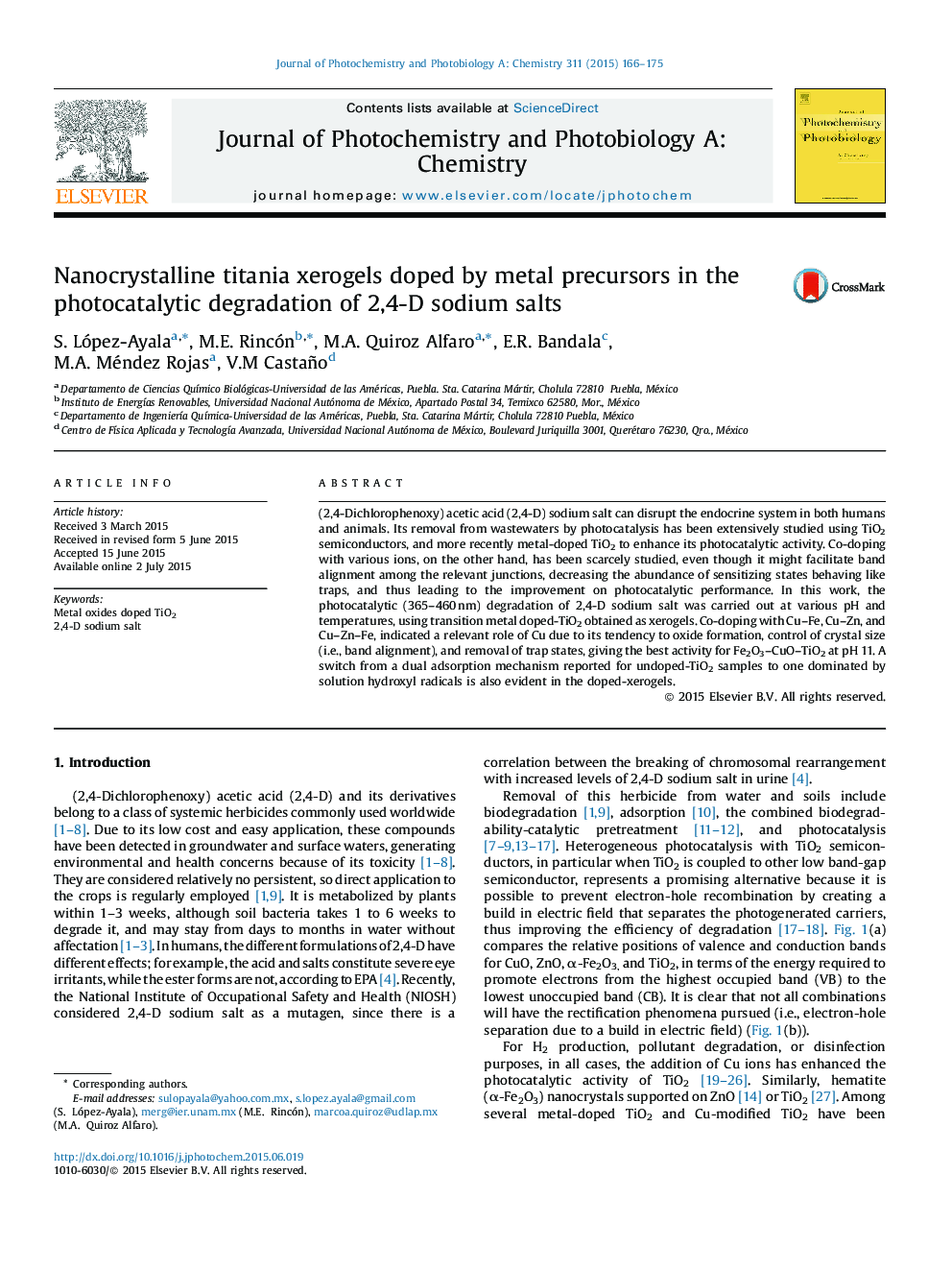| Article ID | Journal | Published Year | Pages | File Type |
|---|---|---|---|---|
| 26123 | Journal of Photochemistry and Photobiology A: Chemistry | 2015 | 10 Pages |
•Heterodoped titania xerogels show improved photocatalytic activity.•Heterodoped titania xerogels show rectification phenomena.•The effect of co-doping increased the stability and the photocatalytic activity of TiO2.•Novel photocatalysts for Advanced Oxidation Processes were optimized.
(2,4-Dichlorophenoxy) acetic acid (2,4-D) sodium salt can disrupt the endocrine system in both humans and animals. Its removal from wastewaters by photocatalysis has been extensively studied using TiO2 semiconductors, and more recently metal-doped TiO2 to enhance its photocatalytic activity. Co-doping with various ions, on the other hand, has been scarcely studied, even though it might facilitate band alignment among the relevant junctions, decreasing the abundance of sensitizing states behaving like traps, and thus leading to the improvement on photocatalytic performance. In this work, the photocatalytic (365–460 nm) degradation of 2,4-D sodium salt was carried out at various pH and temperatures, using transition metal doped-TiO2 obtained as xerogels. Co-doping with Cu–Fe, Cu–Zn, and Cu–Zn–Fe, indicated a relevant role of Cu due to its tendency to oxide formation, control of crystal size (i.e., band alignment), and removal of trap states, giving the best activity for Fe2O3–CuO–TiO2 at pH 11. A switch from a dual adsorption mechanism reported for undoped-TiO2 samples to one dominated by solution hydroxyl radicals is also evident in the doped-xerogels.
Graphical abstractFigure optionsDownload full-size imageDownload as PowerPoint slide
